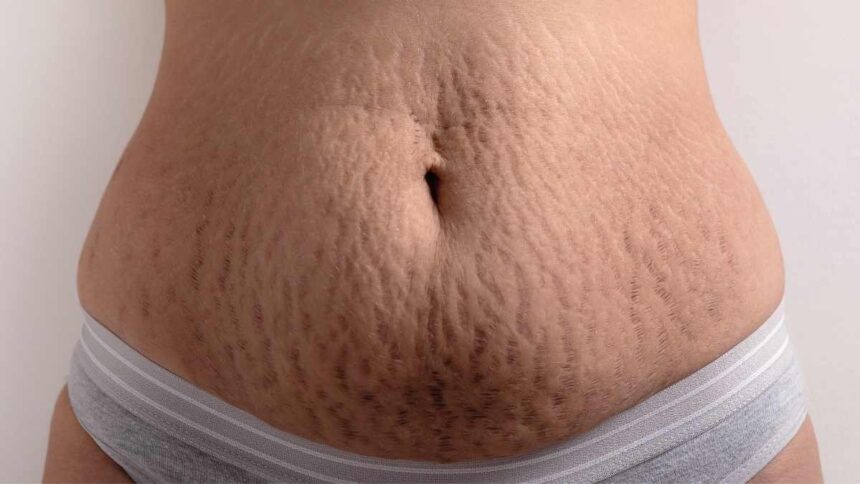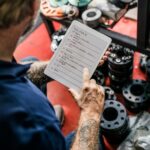What Are Stretch Marks?
Stretch marks, also known as striae, are indented streaks or lines that appear on the skin. They often occur when the skin stretches rapidly due to factors like pregnancy, puberty, bodybuilding, or sudden weight gain or loss. While they are harmless, stretch marks can sometimes cause aesthetic concerns, as they typically appear in areas where the skin is stretched, such as the abdomen, thighs, hips, and arms.
Stretch marks begin as red, purple, or dark streaks and gradually fade to a lighter, silvery color. Over time, the elasticity of the skin may be affected, which is why many individuals seek treatments to minimize the visibility of these marks.
Understanding the Causes of Stretch Marks
Stretch marks occur when the skin is stretched beyond its limit, causing the middle layer of the skin (dermis) to tear. Several factors contribute to the formation of stretch marks, including:
- Hormonal Changes: Hormones like cortisol can reduce the skin’s ability to stretch without causing damage.
- Rapid Weight Changes: Sudden weight gain or loss can stretch the skin, resulting in stretch marks.
- Pregnancy: As the body undergoes changes during pregnancy, the skin in the abdomen, breasts, and thighs can stretch, leading to stretch marks.
- Genetics: Some individuals may be genetically predisposed to developing stretch marks, especially if family members have experienced the same issue.
Stretch Mark Reduction Treatments in Abu Dhabi
Abu Dhabi offers several advanced, safe, and effective treatments for stretch mark reduction. These treatments aim to improve the appearance of stretch marks by stimulating collagen production, resurfacing the skin, and enhancing skin elasticity. Below are some of the most popular options available in the city.
Laser Treatments for Stretch Mark Reduction
Laser therapy is one of the most advanced and effective methods for reducing the appearance of stretch marks. There are different types of lasers used in stretch mark treatments, including fractional CO2 lasers, which are known for their ability to stimulate collagen production and improve skin texture.
Fractional CO2 Laser
Fractional CO2 lasers are considered one of the most effective options for stretch mark reduction. This treatment works by targeting the deeper layers of the skin, stimulating collagen production, and promoting skin healing. The laser works to resurface the skin, breaking down the scar tissue and encouraging the skin to regenerate, resulting in smoother, more even skin.
The procedure typically requires a few sessions, and patients may experience mild redness or swelling after treatment. However, fractional CO2 lasers are effective for a variety of skin concerns, including both new and old stretch marks, and offer long-lasting results.
Pulsed Dye Laser
Pulsed dye lasers are another option for reducing the redness or pigmentation associated with fresh stretch marks. This laser treatment works by targeting blood vessels under the skin, improving circulation, and promoting the healing of damaged skin tissue. Over time, pulsed dye lasers can help fade the color of red or purple stretch marks, making them less noticeable.
The procedure is non-invasive, and the downtime is minimal. It typically requires several sessions to achieve optimal results, with most patients noticing improvement after 4 to 6 treatments.
Microneedling
Microneedling, also known as collagen induction therapy, is another effective method for reducing the appearance of stretch marks. This procedure involves using a device with tiny, fine needles to create micro-injuries in the skin, which stimulates the production of collagen and elastin. Over time, these new collagen fibers help to smooth out the stretch marks, making them less visible.
Microneedling is particularly effective for older stretch marks, as it can break down scar tissue and encourage skin regeneration. The procedure is minimally invasive and typically requires a series of treatments for the best results. There is little downtime, and most patients can return to their normal activities immediately after the procedure.
Radiofrequency Treatment
Radiofrequency (RF) treatment is a non-invasive procedure that uses energy waves to stimulate collagen production and improve skin tone and texture. RF treatments are effective for stretch mark reduction by tightening the skin and enhancing its elasticity, helping to reduce the appearance of stretch marks over time.
During the procedure, RF energy is applied to the skin, which penetrates the deeper layers and stimulates collagen production. This treatment is ideal for patients looking for a non-surgical option with no downtime. Results can take several weeks to become visible, but with consistent treatments, many patients see significant improvements in skin smoothness and elasticity.
Chemical Peels
Chemical peels use a combination of acids to exfoliate the skin and promote the regeneration of new skin cells. This treatment helps reduce the appearance of stretch marks by removing the outer layers of skin, allowing fresher, more youthful skin to surface.
There are different types of chemical peels, ranging from mild to deep. The depth of the peel determines how much exfoliation and skin regeneration occurs. Mild chemical peels can improve the texture of the skin, while deeper peels are more effective for reducing the appearance of old, deep stretch marks.
Chemical peels can be combined with other treatments, such as laser therapy or microneedling, for enhanced results. However, this treatment may require some downtime, depending on the intensity of the peel.
Choosing the Right Treatment
The right treatment for stretch mark reduction depends on several factors, including the age and severity of the stretch marks, skin type, and personal preferences. Consulting with a qualified dermatologist or cosmetic specialist in Abu Dhabi is essential to determine the best treatment plan for your individual needs.
Benefits of Stretch Mark Reduction Treatments in Abu Dhabi
- Improved Skin Texture: These treatments help smooth out the skin’s surface, making stretch marks less noticeable.
- Non-Surgical Options: Many treatments are non-invasive, requiring little to no downtime and allowing patients to resume their normal activities quickly.
- Customized Plans: Treatments can be tailored to your unique needs and the severity of your stretch marks, ensuring the best possible results.
- Long-Term Results: With consistent treatments, patients can achieve long-lasting results and enjoy smoother, more even skin.
Conclusion
Stretch mark reduction is possible with the right treatment, and Abu Dhabi offers a wide range of safe and effective options. Whether opting for laser treatments, microneedling, or radiofrequency, individuals can enjoy smoother skin and greater confidence. As with any cosmetic treatment, it’s essential to seek professional guidance to ensure the most suitable and effective treatment plan for your skin type and goals.
FAQs
How long does it take to see results from stretch mark treatments? The time to see results varies depending on the treatment. Laser therapies may take several sessions, and results typically begin to show after a few weeks. Microneedling and radiofrequency treatments may take a few months for full results to appear.
Are the treatments for stretch marks painful? Most treatments for stretch marks are minimally painful, and topical numbing creams are often used to reduce discomfort. Some treatments, like microneedling, may cause mild discomfort, but this is generally tolerable.
Can stretch marks be completely removed? While treatments can significantly reduce the appearance of stretch marks, complete removal is not always possible. However, these procedures can make them much less noticeable, leading to smoother, more even skin.
How many sessions will I need to treat stretch marks? The number of sessions depends on the treatment chosen and the severity of the stretch marks. Typically, a series of 3-6 treatments is recommended for optimal results.
Is there any downtime after stretch mark reduction treatments? Downtime varies depending on the treatment. Non-invasive treatments like microneedling and radiofrequency usually have minimal downtime, while more intense treatments like chemical peels may require a few days of recovery.



